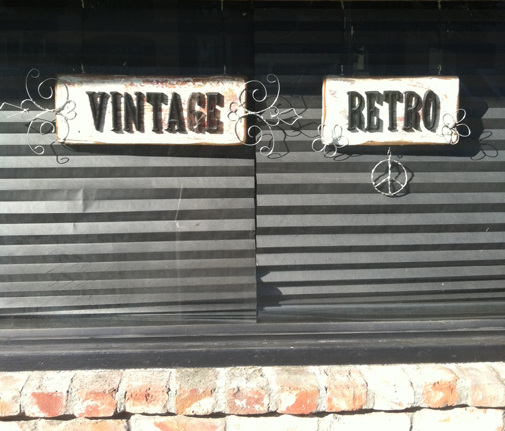 Some of my very favorite pieces in my wardrobe are things that belonged to my mother when she was (around) my age. Not only does this lead me to believe that style may be a genetic trait (cause Georgia has great style), it also made wonder what the differences are between vintage, retro, and antique.
Some of my very favorite pieces in my wardrobe are things that belonged to my mother when she was (around) my age. Not only does this lead me to believe that style may be a genetic trait (cause Georgia has great style), it also made wonder what the differences are between vintage, retro, and antique.
Lots of so called “fashionistas” like to throw around the term vintage, but is their bag circa 1992 really “vintage” or just something they picked up at a thrift store and probably should just be classified as “used”? Since I really like to know what’s what, I did a little research to find out the official definitions of these time
Vintage:
Vintage clothing is a generic term for new or second hand garments originating from a previous era. The phrase is also used in connection with a retail outlet, e.g. “vintage clothing store.” It can also be used as an adjective: “This dress is vintage.”
The word vintage is copied from its use in wine terminology, as a more elegant-seeming euphemism for “old” clothes.
Generally speaking, clothing which was produced before the 1920s is referred to as antique clothing and clothing from the 1920s to 1980s is considered vintage.
Retro:
Retro, short for retrospective, or “vintage style” usually refers to clothing that imitates the style of a previous era. Reproduction, or repro, clothing is a newly-made but faithful copy of an older garment.
Antique:
Most authorities consider the actual definition of the term ‘antique’ to mean an age of at least 100 years. If an item is not definitively datable to 100 or more years in age, it should not be directly referred to as an antique.
So there you have it, ladies. Vintage is basically a trendy way of saying “used.” While I have no problem wearing my mom’s “used” clothes… I do have a hard time slipping my tootsies into some other broad’s old shoes. On the bright side, shopping at a luxury consignment store is a great way to save cash and just think… “it was somebody’s mom’s” clothes at one point or another.
xx,
WhyDid



 Follow
Follow

Love your site! I guess by these definitions, everything is virtually
“retro” since fashion constantly recycles itself. There is no such thing as fully innovative. By now, everything is inadvertently borrowed in one way or another from a previous era. Some of the best things I have, I found at thrift stores; not fancy consignment shops or “vintage boutiques” where items are usually grossly marked-up. It’s interesting to think of where certain pieces came from and its possible backstory. I love my used goods because they are unique and somehow found me 🙂